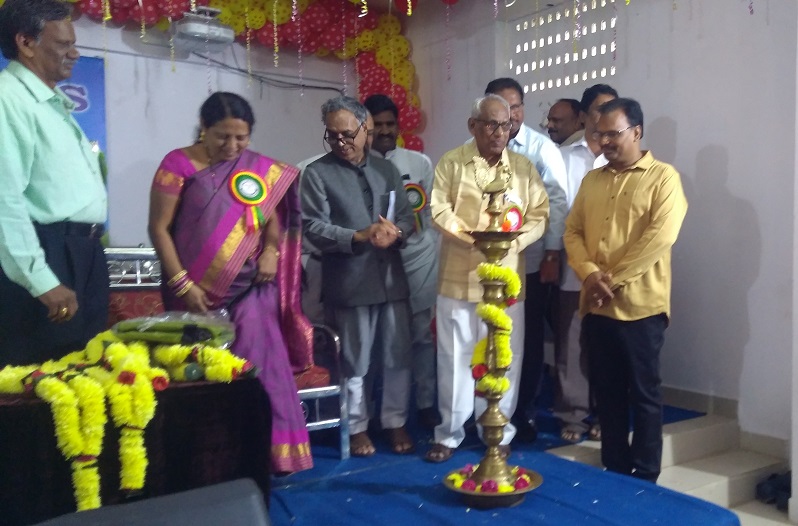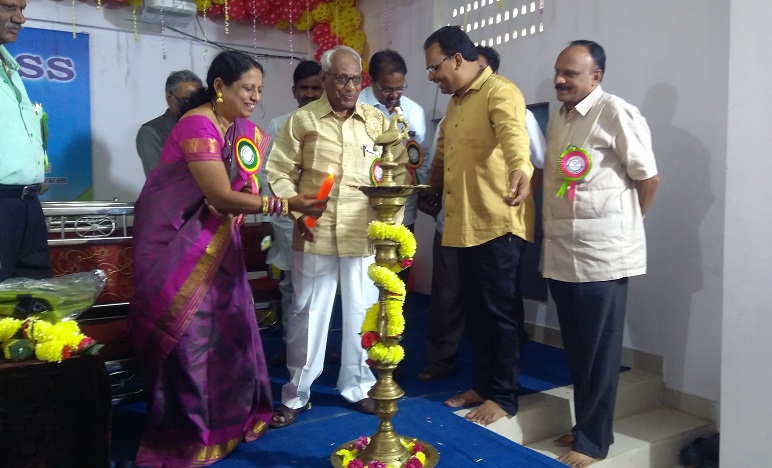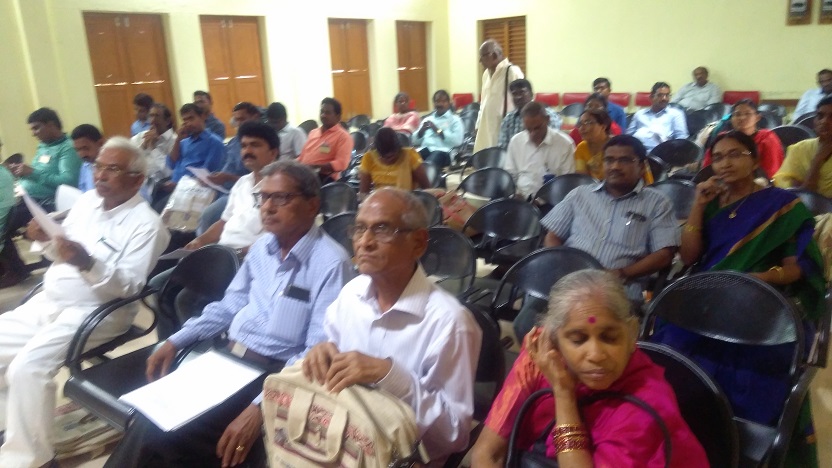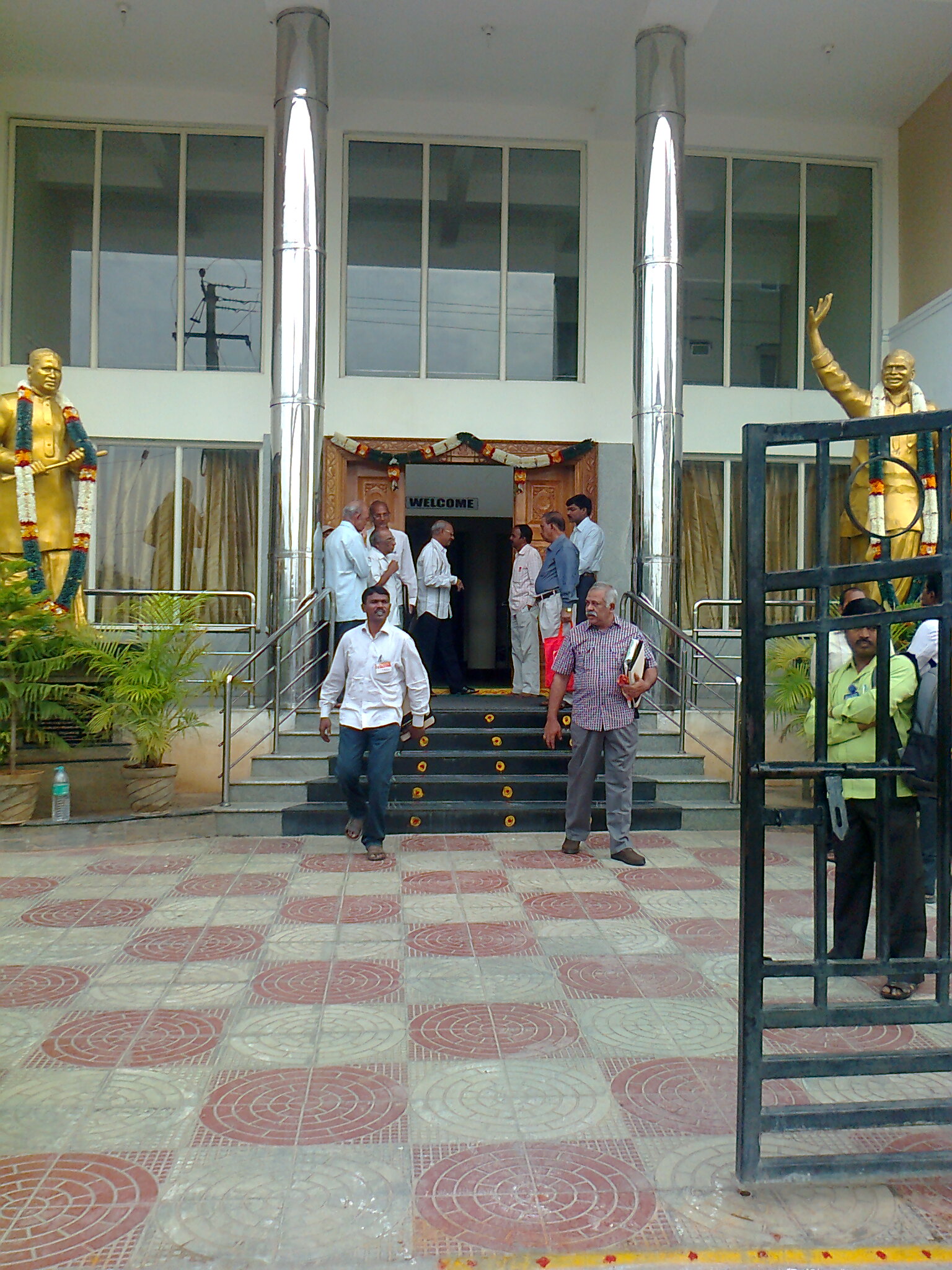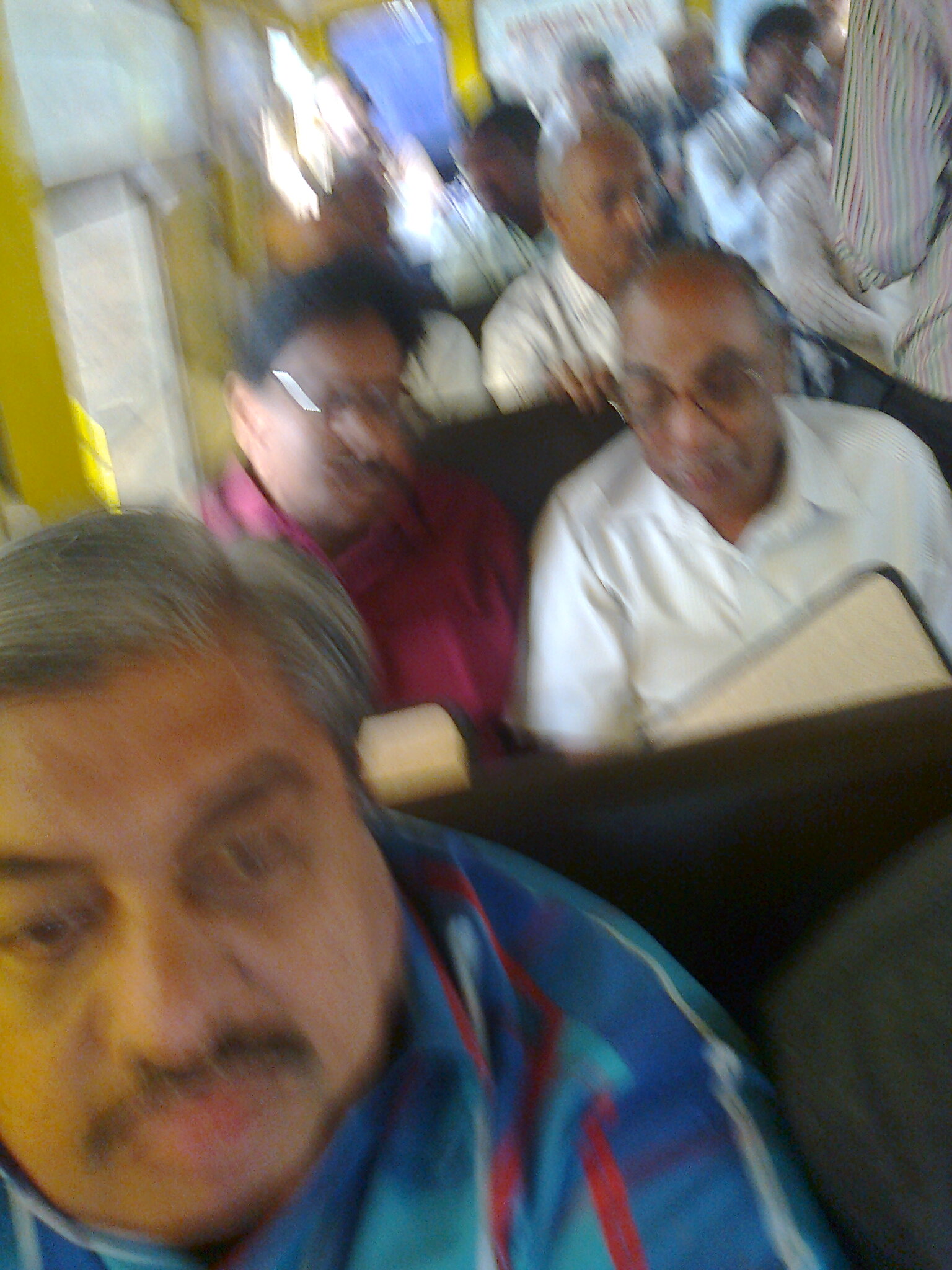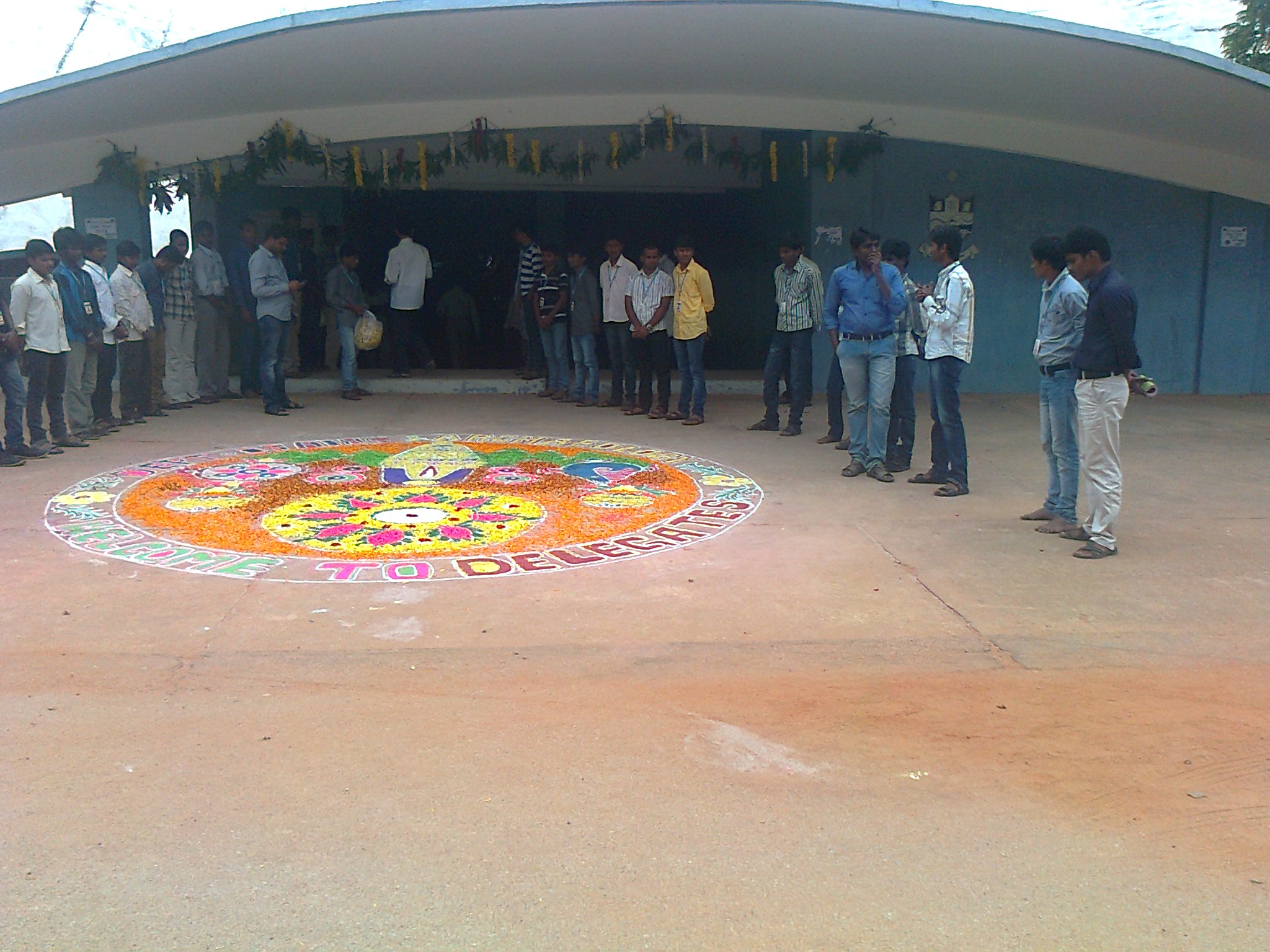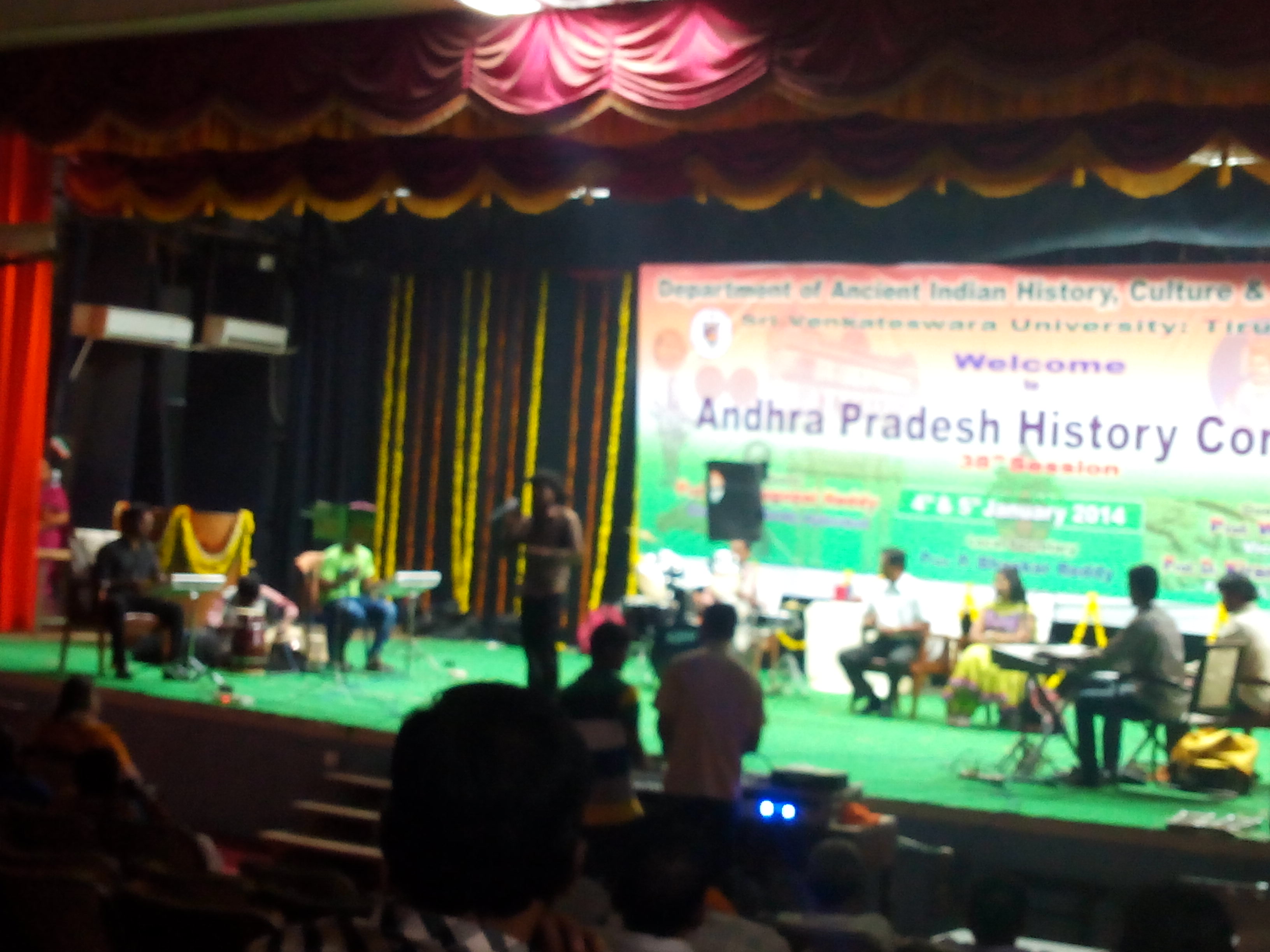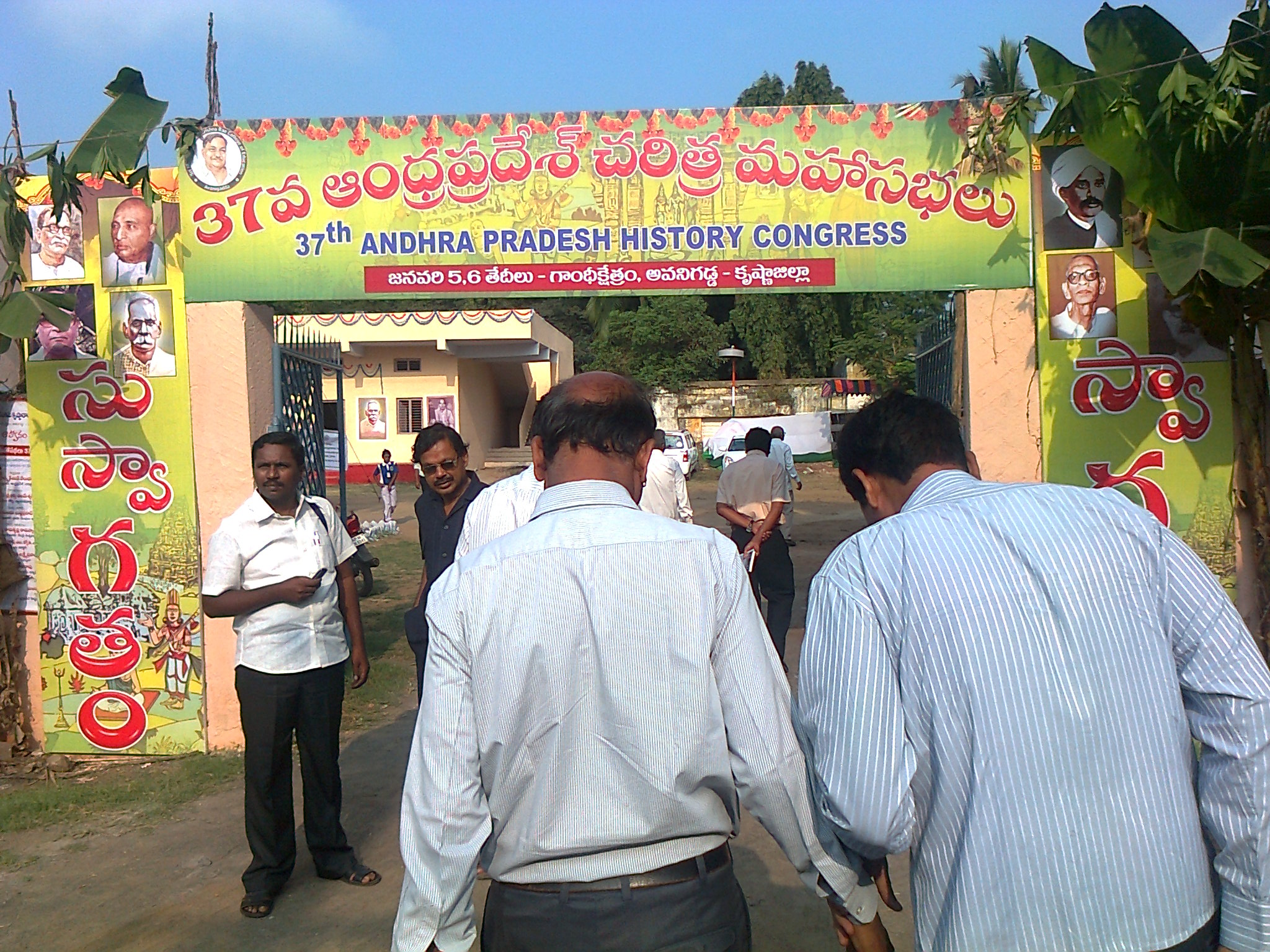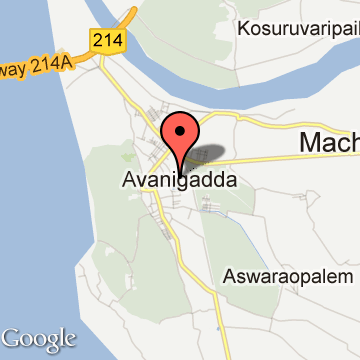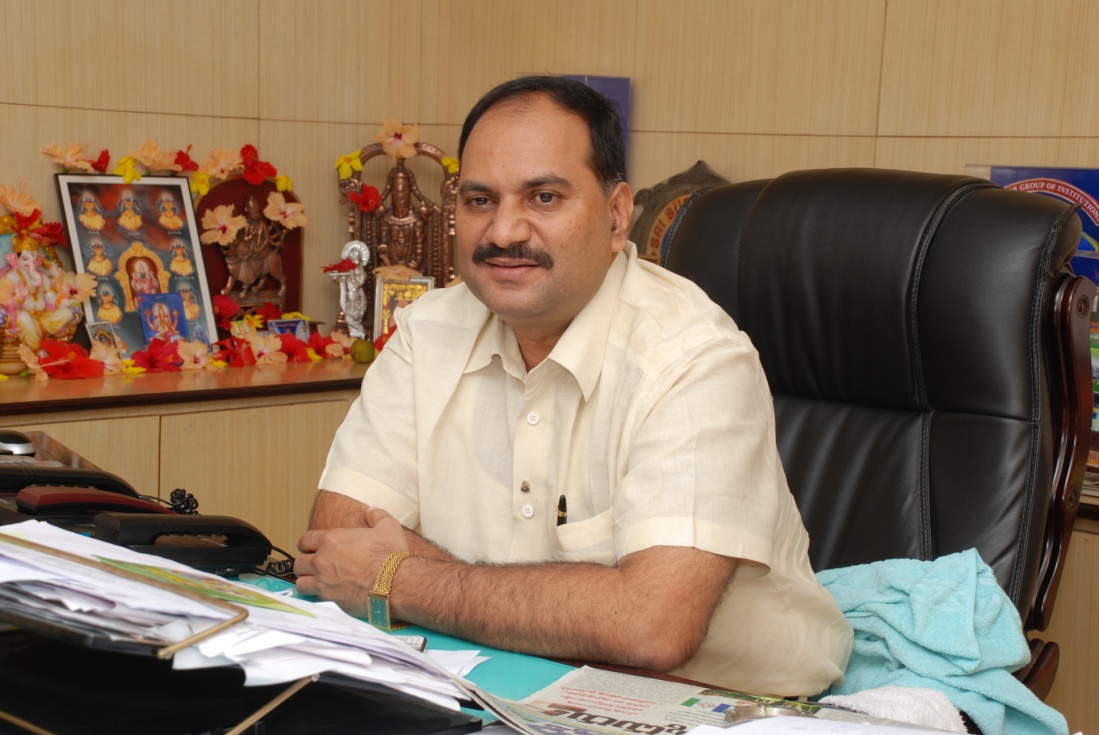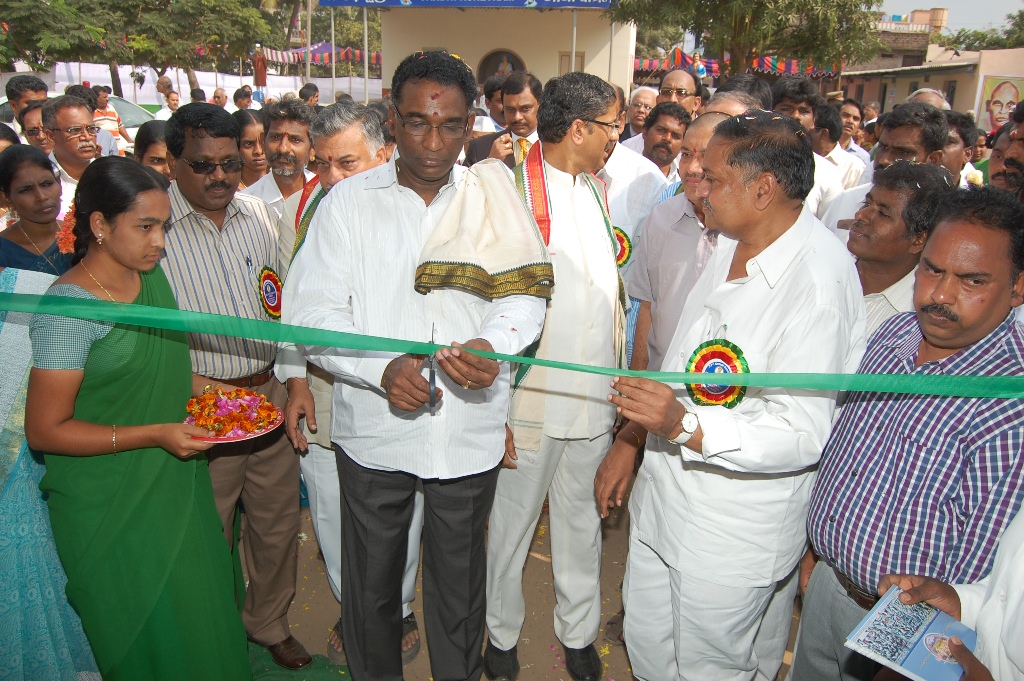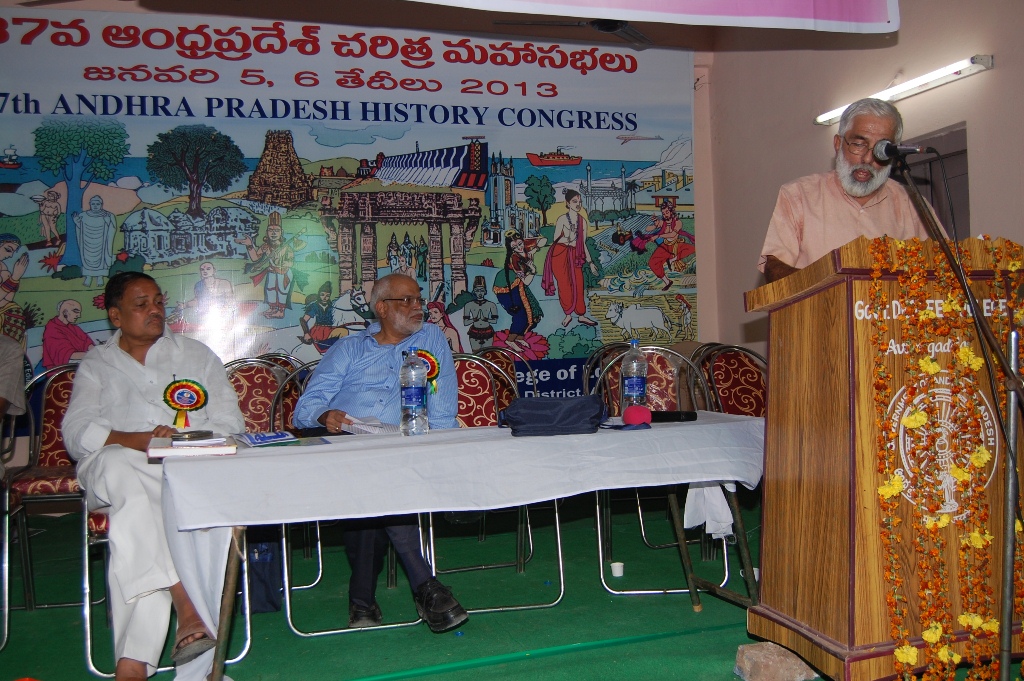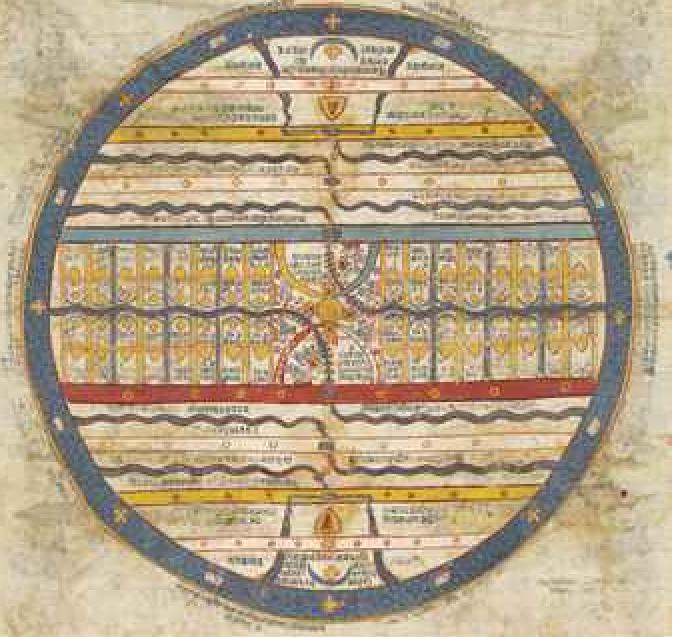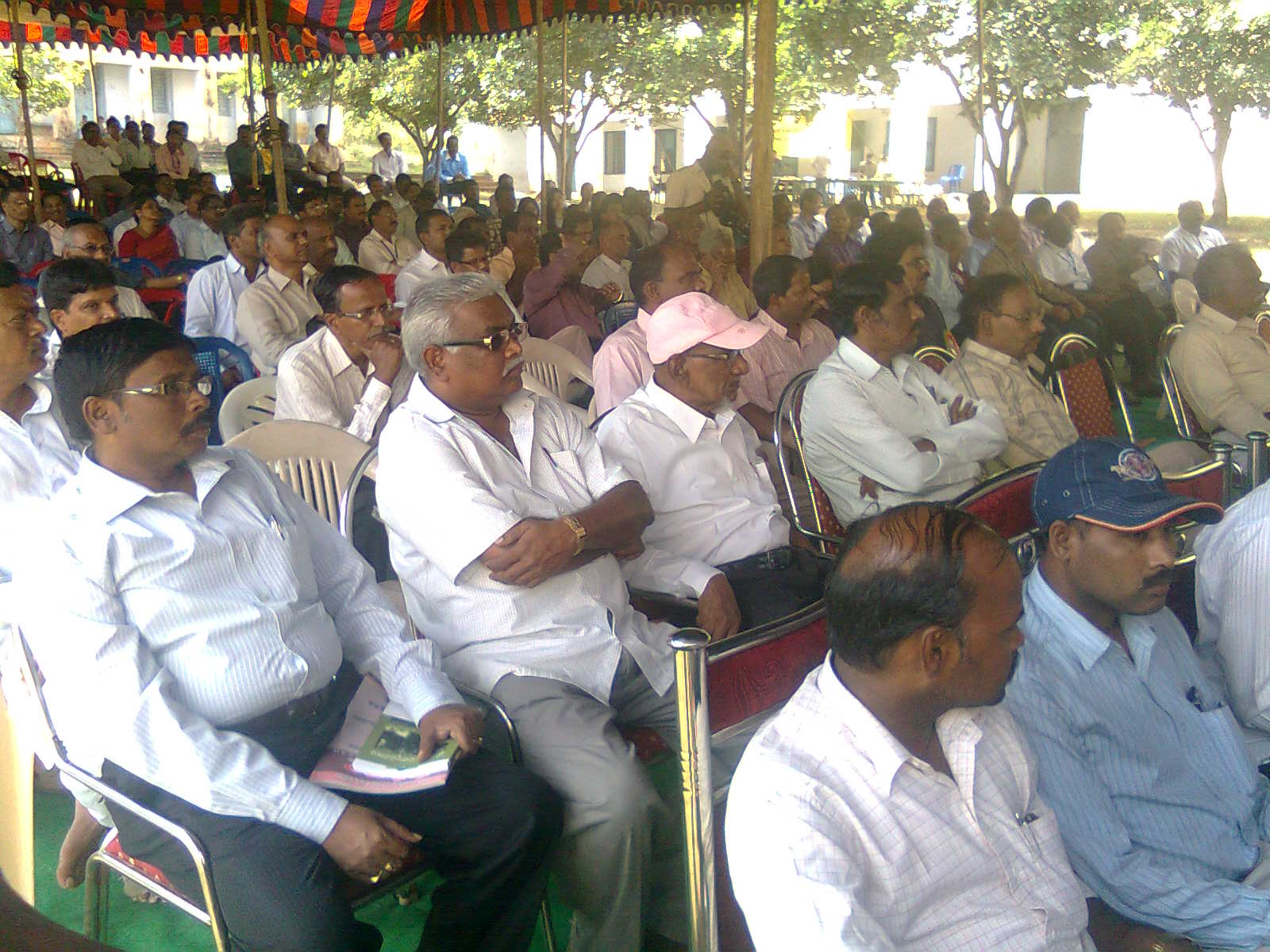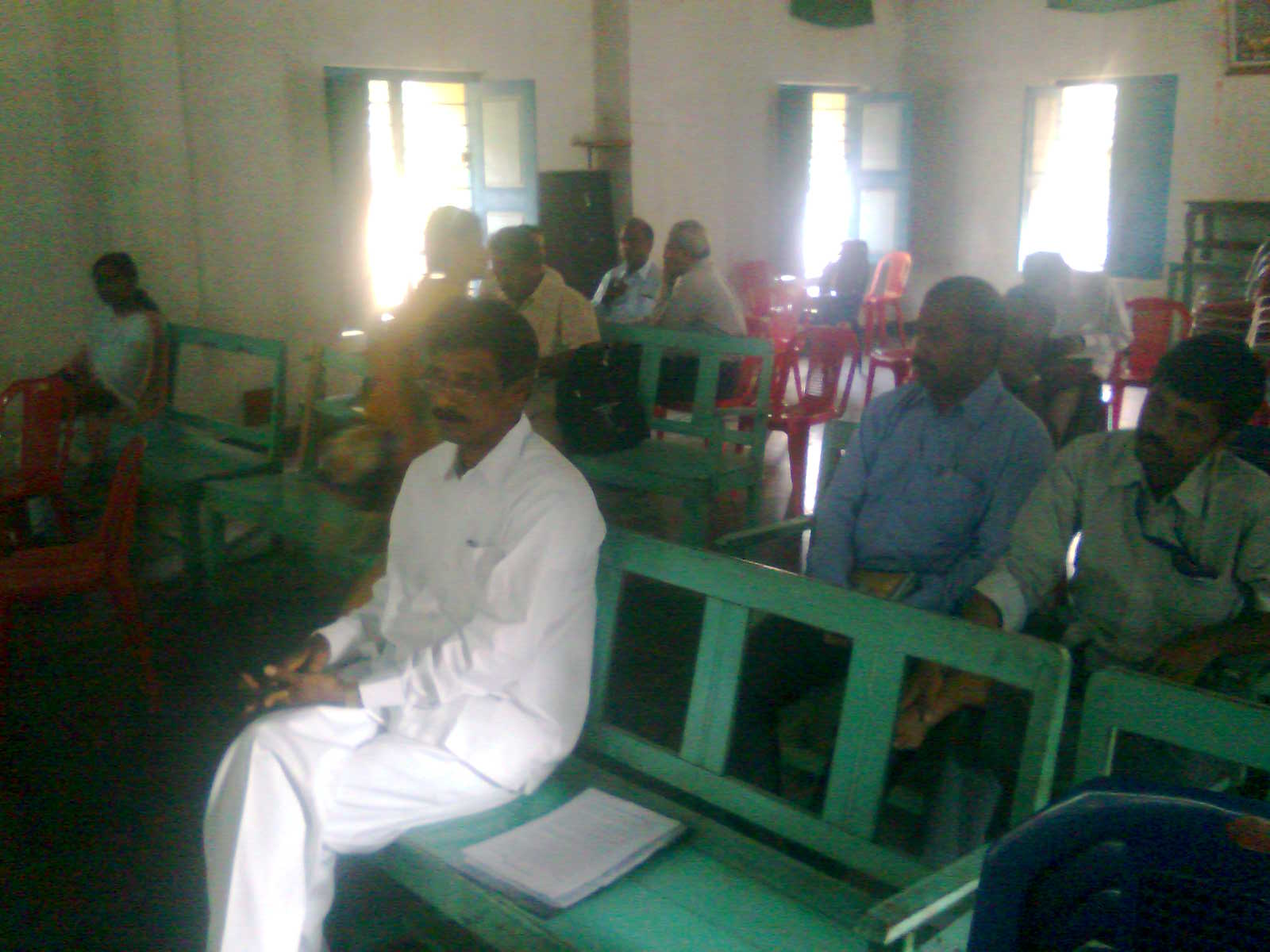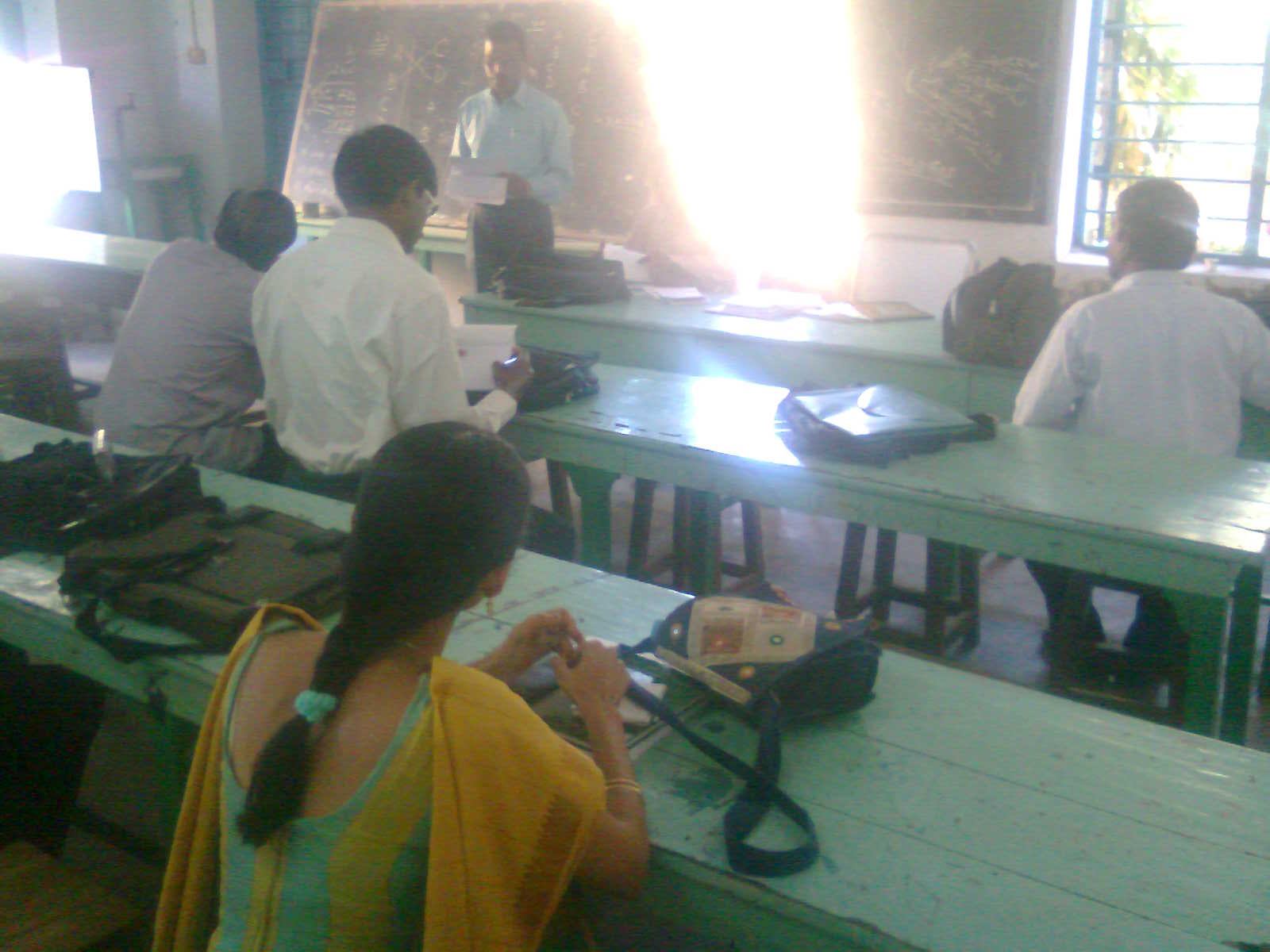The 46th annual session of the Andhra Pradesh History Congress held at Vishakapatnam

Dr. Lankapalli Bullayya College, Vishakapatnam: Dr. Lankapalli Bullayya College was established in the year 1973 by the “Society for Collegiate Education”. It is located in the heart of Visakhapatnam city in a sprawling 10-acre campus. The college was named in honor of Dr Lankapalli Bullayya[1], who was the then Vice Chancellor of Andhra University. The college is affiliated to Andhra University. Today, the Society manages multiple colleges offering 34 programs at the Intermediate, Engineering, UG, and PG levels, catering to nearly 7,000 students. These students are supported by a dedicated team of 300 teaching faculty and 100 non-teaching staff. The college is in the 50th year of inception. Number of events are being conducted as part of Golden Jubilee Celebration. Thus, the hosting of the 46th Andhra Pradesh History Congress has been one of such events. Secretary and Correspondent of Dr. Lankapalli Bullayya College G. Madhu Kumar, former AU Professor K. Thimma Reddy and M. Srinivasa Reddy, general secretary of AP History Congress, addressing a press conference in Visakhapatnam on Friday, 05-01-2024. K. Thimma Reddy explained in detail about the APHC.
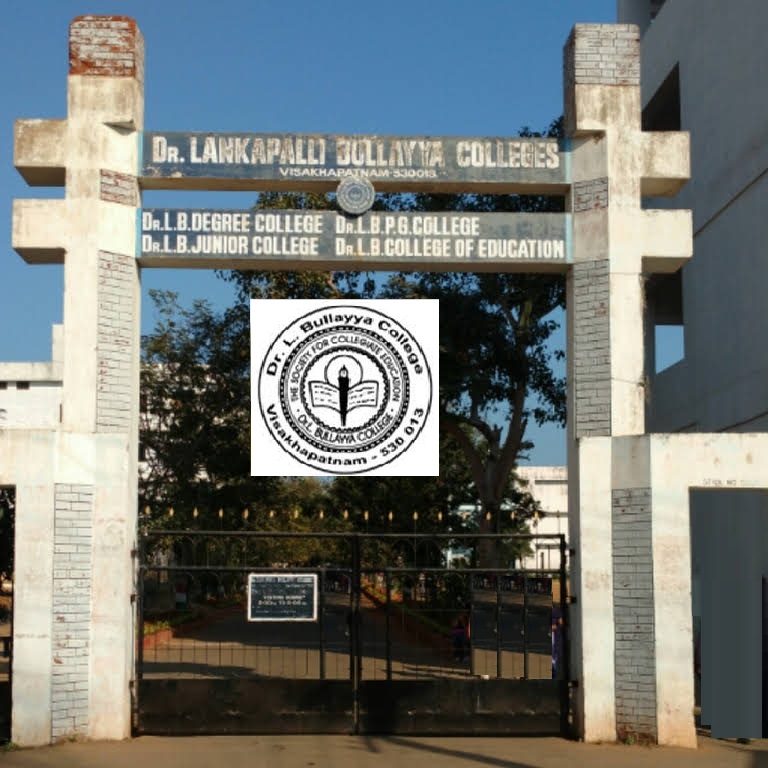
Dr. Lankapalli Bullayya College campus entrance
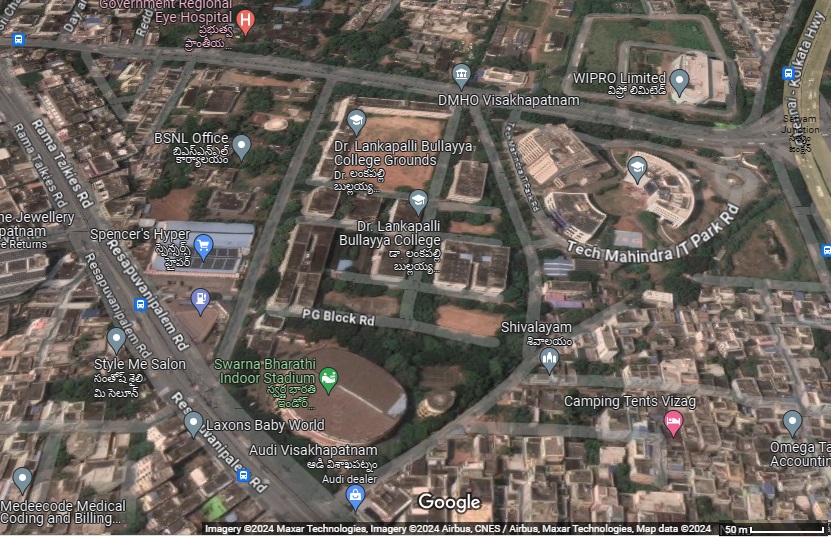
Location of the colleges within the campus – Courtesy Google map
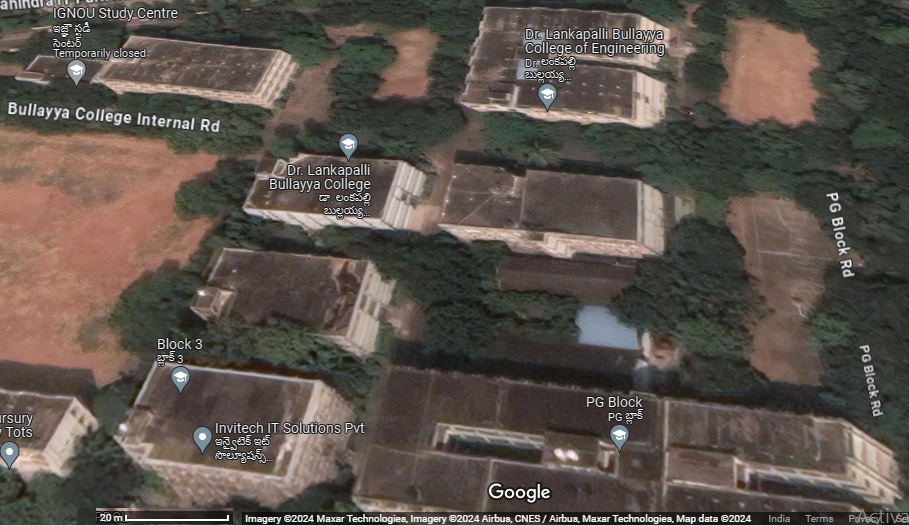
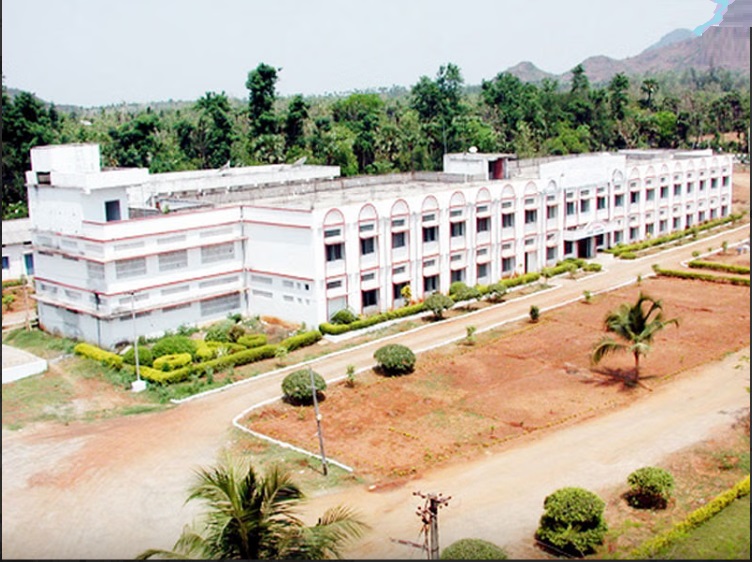
The founder of the college

46th session held in Vishakapatnam: The delegates from the states of Andhra, Telengana, Tamilnadu, Puducherry and Karnataka reached the venue, as it is in the city and after registration, they were taken to the Hotels, lodges etc., where they had been accommodated. Arrangements were made already for the outstation delegates. 0n 6th morning, the inaugural session was held in the colorful samiana put up in the campus of the college. After breakfast, the delegates reached the place and seated. Dr. Lankapalli Bullayya College hosted the 46th annual session of the Andhra Pradesh History Congress at the college premises from Saturday 06-01-2024[2]. The two-day session was hosted by the college, as part of its golden jubilee celebrations, said the secretary and correspondent of the college G. Madhu Kumar[3]. RGUKT Chancellor and Dr. LB College president K.C. Reddy was there. C Anjaneya Reddy, Former DGP recalled how the enrolment in History for PG courses has been thinning over a period of time[4]. Speaking at the 46th Andhra Pradesh History Congress (APHC) annual session at Dr Lankapalli Bullayya College campus here on Saturday, 06-01-2024, he shared that plans are on to establish a Social Sciences Centre in the city[5]. The former DGP expressed concern that reduction in the enrolment of History-based courses is leading to closure of departments[6]. He made an appeal to Andhra University VC in-charge not to close any department in the university as each subject serves its own need[7].

Press briefing about the conference by the organizers


Inaugurated on 06-01-2024, Saturday: Speaking on the occasion, secretary and correspondent of Dr Lankapalli Bullayya College G Madhu Kumar said[8] the event was held as a part of the institution’s golden jubilee celebrations. “The college has been catering to the academic needs of students belonging to BPL families ever since its inception.” Introducing the Andhra Pradesh History Organisation, Prof Vakula Bharanam Ramakrishna, said[9], “The importance of arts has been reducing slowly. Arts play a vital role in passing down culture and tradition to future generations.” Marking the occasion, a souvenir was released by Vice-Chancellor in-charge of Andhra University K Samatha. She briefed about the history and culture of the city. Dignitaries were felicitated on the occasion. As many as 50 delegates, 100 research scholars, and 70 teachers attended the session from across the country. Generally, 200-300 delegates used to attend, but this time, it is surprising only 50 attended the session. Perhaps, the limited and committed delegates could spend more time in the paper reading and discussion sessions. Even otherwise, the APHC gives time for the paper presenters and subsequent question-asking and discussion for the benefit of the researchers.

senior members and VIPs who attended the inaugural function..

Inaugural session













Food arrangement made excellent….traditional style served on banana leaf.
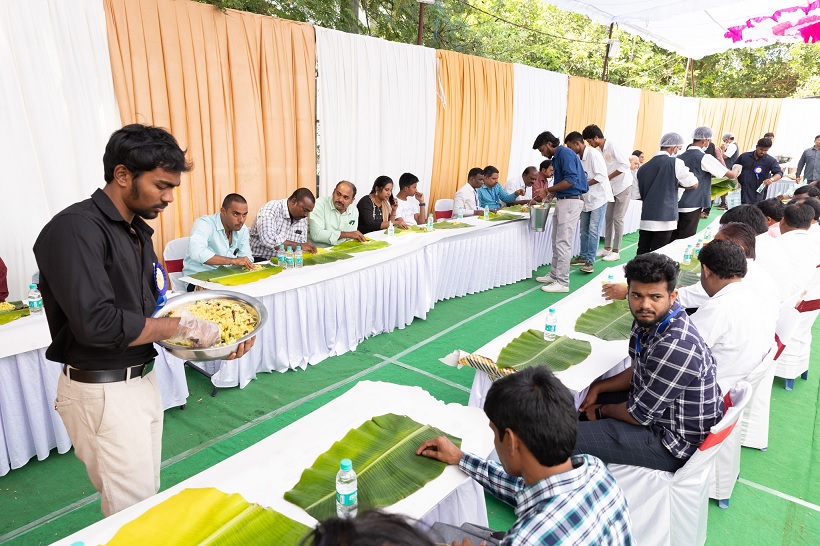
Sectional Presidents for the Session: For the five sections of the proceedings, the following were selected to chair and conduct the academic sessions.
| Sl.No | Session | Name and place |
| 1 | Ancient Andhra History & Archaeology | Prof. S. Murali Mohan, Dept. of History Acharya Nagarjuna University, Guntur |
| 2 | Medieval Andhra History | Dr. J. Krishna Prasad Babu Dept. of History, Jawahar Bharati College Kavali, P.S. Nellor Dist. |
| 3 | Modern Andhra History | Prof. Malli Gandhi, Dept. of History, Regional Institute of Education, Mysore, Karnataka State |
| 4 | Historiography | Prof. Azizuddin Hussain Honorary Prof. in Centre for Urdu Culture Studies, Moulana Azad National Urdu University, Hyderabad, Telangana State |
| 5 | Local History | Dr. A.L. Rupa Vani, H.O.D., Dept. of History Dr. V.S. Krishna Govt. Degree College Visakhapatnam |
Ancient India session

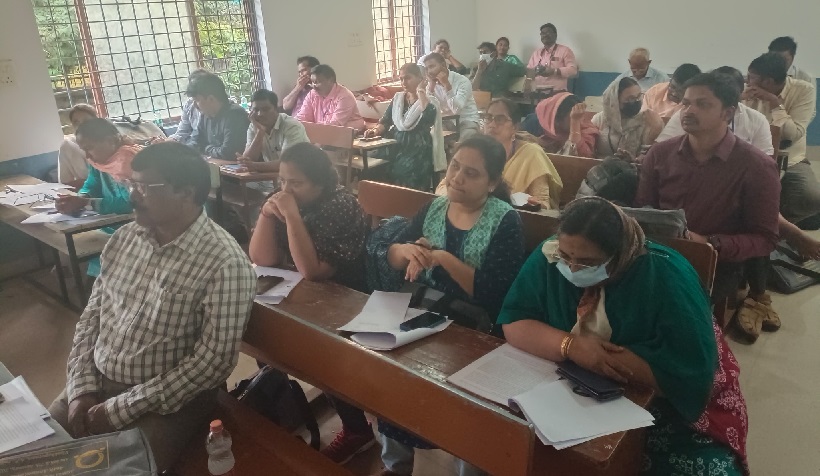
Medieval India session




Modern India session


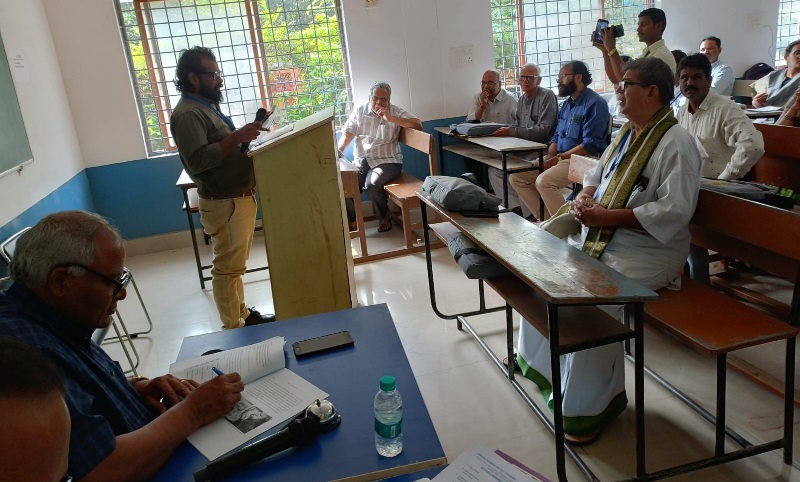

Historiography session
Local History session

Academic sessions: It is understood that a maximum number of papers were received and 67 papers were presented in Modern History. As 130 papers were reportedly received, 50% amounted to the modern period and the rest covered the other five sections. There were 185 members registered as delegates and 130 papers presented and thus, the academic sessions carried on well. The social, religious, political, economic and other issues were taken up under different topics and papers were presented by the students, researchers and scholars.
| Sl.No | Session | Name and place | N.of papers presented |
| 1 | Ancient Andhra History & Archaeology | Prof. S. Murali Mohan, | 35 |
| 2 | Medieval Andhra History | Dr. J. Krishna Prasad Babu | 20 |
| 3 | Modern Andhra History | Prof. Malli Gandhi, | 65 |
| 4 | Historiography | Prof. Azizuddin Hussain | 15 |
| 5 | Local History | Dr. A.L. Rupa Vani, | 6 |
| Total | 141 |
The sectional presidents moderated the paper reading sessions. The paper presenters were given enough time to present their papers. There were discussions and questions asked and the issues were explained by the paper reader, sectional heads and participants.
Research and paper presentation: As usual, the papers had been of different varieties and categories, when dealing with the source materials, because, a regular participant for many years could easily find out that certain topics issues and subjects are repeated and presented again and again. The research students who have taken up their topics for M.Phil and Ph.D tried to push their themes through their papers. While the attempts are appreciated, as tey use the occasion for testing ground, but, the themes and topics should have been new and different, instead of repeating and rehashing. Nowadays, as the plagiarism software are used for checking they may get difficulties in clearing and it would consume a lot of time. Therefore, it is better for the researchers to take new topic and proceed, so that there would not be problem on any account. Mainly field work, interviews, reading primary sources and collecting other materials are very important. The secondary materials cannot be relied upon completely, as they are published for the purpose. Moreover, one cannot rely upon the view of the others also.
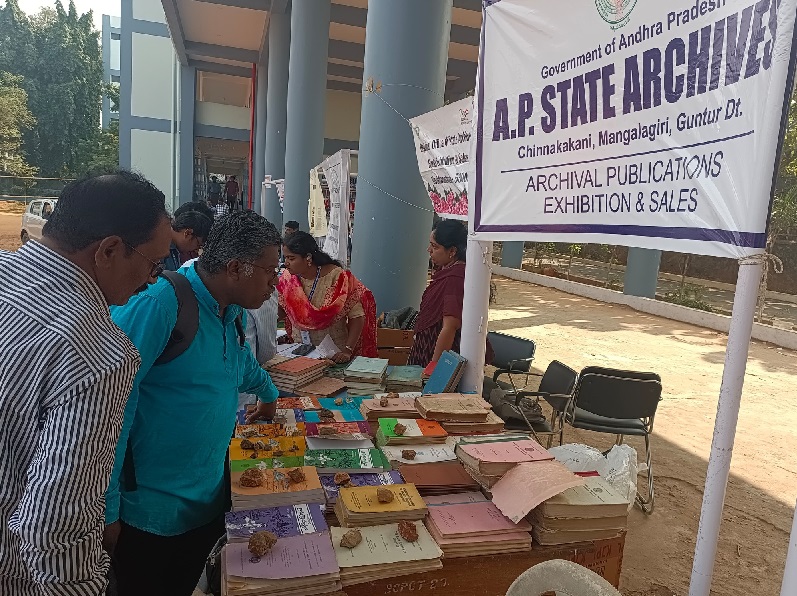
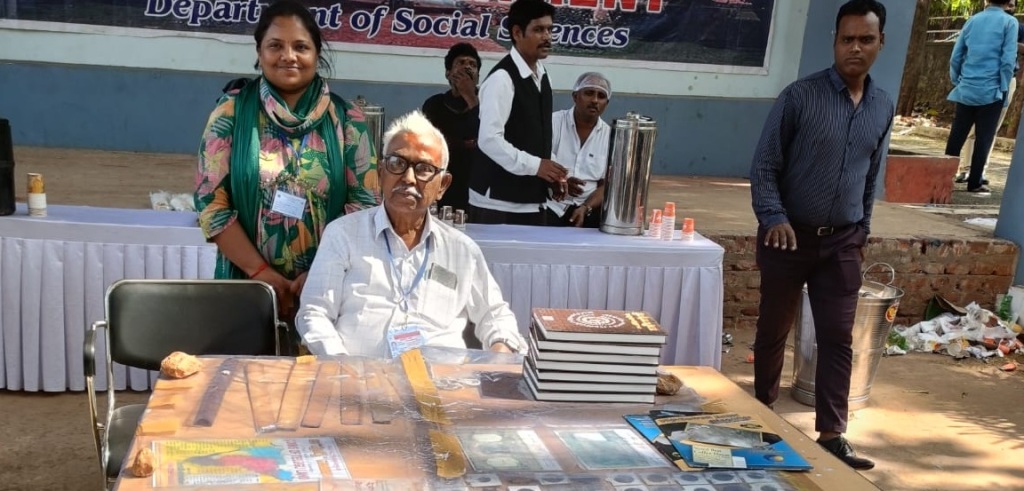
A coin exhibition was conducted and different coins were displayed….



Mamidipudi Venkatarangaiya Memorial Lecture: Linguistics is the scientific study of language. Linguistics is based on a theoretical as well as a descriptive study of language and is also interlinked with the applied fields of language studies and language learning, which entails the study of specific languages. Before the 20th century, linguistics evolved in conjunction with literary study and did not exclusively employ scientific methods This year, a special academic session-Mamidipudi Venkalarangaiya Memorial Lecture was delivered by Prof. Garapati Umamaheswara Rao, Director (Rtd.) of the Center for Applied Linguistics and Translation Studies, University of Hyderabad in the evening of the session i.e. on 06-01-2024, on “Linguistics”. As he has been an expert, he explained the nuances of the languages, usage and other concepts.


Dr. Lankapalli Bullayya College hosted the 46th session of APHC in a good manner: The organizers planned the proceedings and could conduct accordingly. The food and ccommodation were also good. About the accommodation, they already asked the delegates to fill up the forms and register online and thus, they could monitor the incoming delegates and their requirements. Of course, the college campus has all infrastructure and other facilities. The 46th APHC session has been one of the best conferences conducted in recent years, comparing to others.
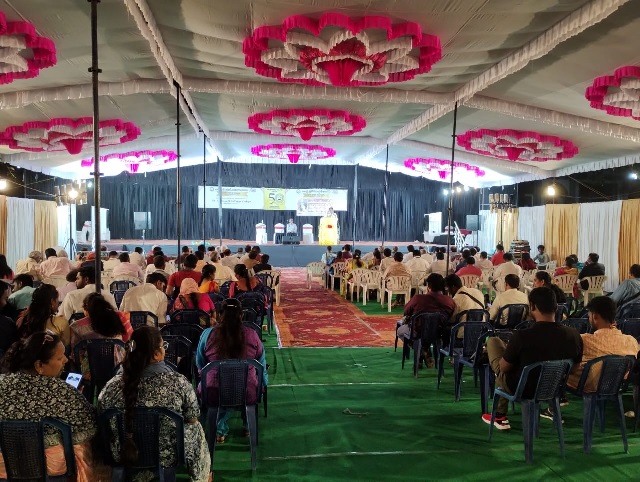
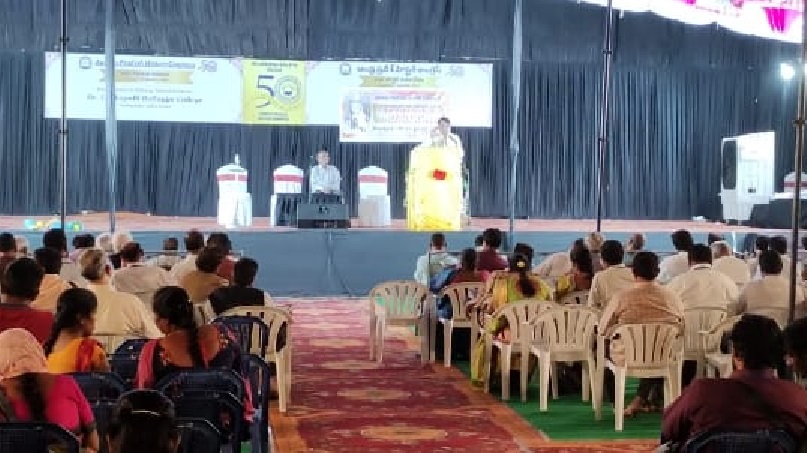
Note: Though, I could not attend this session, I feel I missed one of the best sessions. I got photos and details about the conference from several friends who attended and with the inputs, I have prepared this blog. I sincerely acknowledge the details received from Dr Govindu Surendra, Mukkaranna, Chalapati Rao and others.
Some photos of “APHC” website have also been included.
© K. V. Ramakrishna Rao
09-01-2024
[1] Lankapalli Bullayya (1918–1992) was an Indian educator and vice-chancellor of Andhra University, Andhra Pradesh. He was the first Dalit to be appointed vice-chancellor of an Indian university.Bullayya was born in 1918 in Peravali, near Vemuru, Guntur district He had to travel long distances to receive his education. Bullayya received a B.A. degree with honours from Andhra University and served as principal of a BEd college in Kurnool. He later became a District Educational Officer in Kurnool, Krishna and other districts and served in the Education Department as a senior-level officer. After the formation of Andhra State in 1953, Bullayya was appointed Director of Public Instruction. As Director of Higher Education for the government of Andhra Pradesh, he was instrumental in bringing about educational reform.Bullayya later served at the Union Public Service Commission in an advisory capacity on behalf of Telugu-speaking candidates at the UPSC Interview Board. He was chairman of the Andhra Pradesh and all-India units of the Boy Scouts and a director on the Andhra Bank Board. Bullayya’s wife, Samyuktha, was also an educator and former chairman of the Andhra Pradesh Housing Board. His brother’s sons Lankapally Ramesh Babu and Suresh Babu are public servants in Sanjeeva Reddy Nagar, Hyderabad. Dr. Bullayya College at Visakhapatnam was named after him. He founded Dr. V.S. Krishna Government College in remembrance of his predecessor, vice-chancellor Vasireddy Sri Krishna, and was more concerned about that school than the one named after himself. A bust of Bullayya has been installed in the School of Distance Education in Visakhapatnam.
[2] The Hindu, Andhra Pradesh History Congress to be organised in Visakhapatnam from January 6, January 05, 2024 10:17 pm | Updated 11:58 pm IST – VISAKHAPATNAM.
[3] https://www.thehindu.com/news/cities/Visakhapatnam/andhra-pradesh-history-congress-to-be-organised-in-visakhapatnam-from-january-6/article67710982.ece
[4] Hans India, 46th AP History Congress annual session held , Rani Devalla Hans News Service | 7 Jan 2024 7:00 AM IST
[5] https://www.thehansindia.com/andhra-pradesh/46th-ap-history-congress-annual-session-held-849577?infinitescroll=1
[6] The Hindu, 46th annual session of Andhra Pradesh History Congress begins in Visakhapatnam, January 06, 2024 09:20 pm | Updated 11:35 pm IST – Visakhapatnam.
[7] https://www.thehindu.com/news/cities/Visakhapatnam/46th-annual-session-of-andhra-pradesh-history-congress-begins-in-visakhapatnam/article67713855.ece
[8] Times of India, Importance of arts subjects highlighted, TNN / Jan 8, 2024, 08:29 IST.
[9] https://timesofindia.indiatimes.com/city/visakhapatnam/importance-of-arts-subjects-highlighted/articleshow/106622025.cms











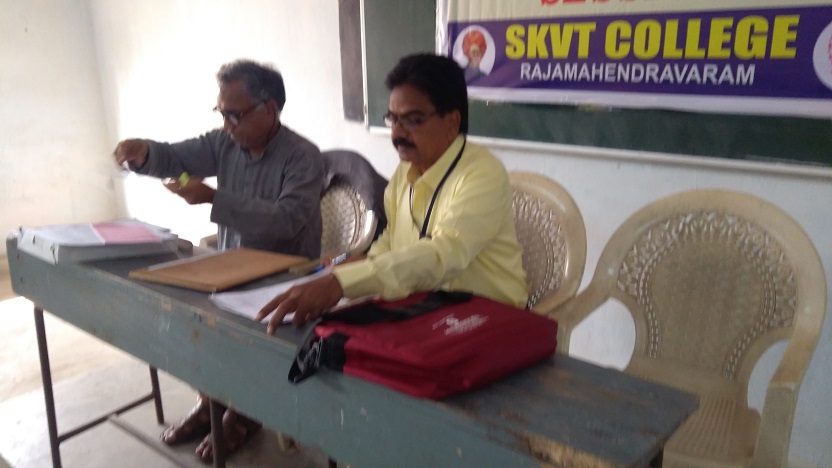
 Ironically, there were only few persons and only three papers presented.
Ironically, there were only few persons and only three papers presented.







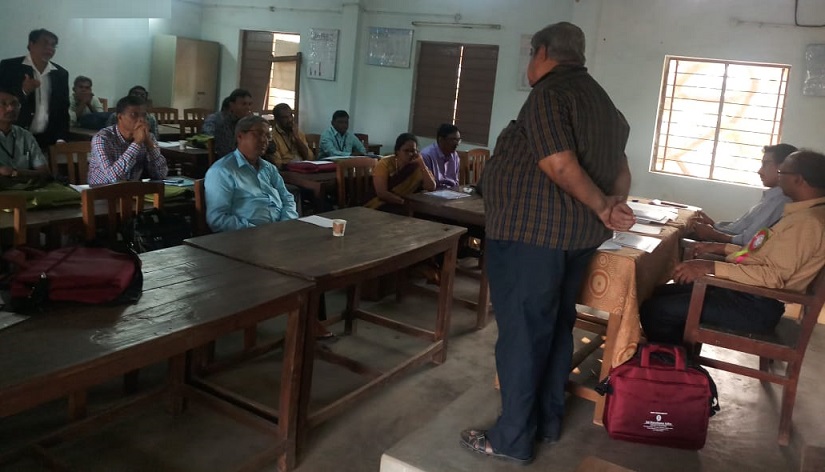

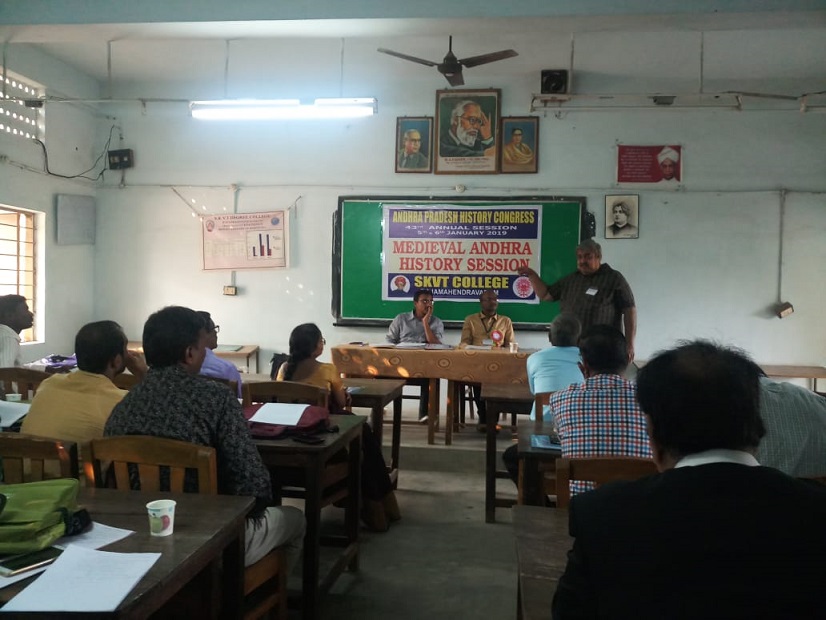







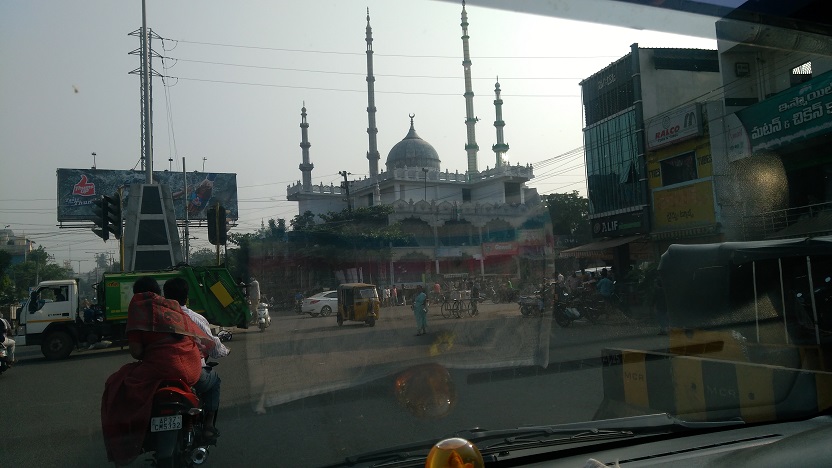


 Origin of Rajamahendravaram – history: It has close connection with the Cholas. It came into existence even by 918 CE. It has a hoary past and is said to have been constructed by the Eastern Chalukya ruler Rajaraja Narendra in 1022 CE. The town has some traces of fine palaces, fort walls, etc., of the 11th century CE. Nannaya, the poet laureate, who was called ‘Adi Kavi’ belonged to this place. There are a number of temples here and the Kotilingala temple on the bank of the Godavari is one of the most important temples. The Godavari Pushkarams celebrated once in Twelve years, attracts a large number of pilgrims from all over the country and world. At a distance of seven kilometers south of Rajahmundry, there is the Dowleswaram anicut across the Godavari. The greatness and celebrity of Rajahmundry as the seat of learning and culture and center of religious and political activities, the meeting place of scholars, poets, learned men, dancers and musicians, that commenced in the days of Vijayaditya Ammaraja–II and his half-brother prince Danamava, reached its zenith in the reign of Rajaraja Narendra and continued till the days of the fall of the Reddy dynasty in the middle of the Fifteenth Century, survives to this day though in a lesser degree. Rajahmundry or Rajamahendravaram as it was called in those days as though all these maintained its high reputation and glory as the seat of Andhra learning and culture.
Origin of Rajamahendravaram – history: It has close connection with the Cholas. It came into existence even by 918 CE. It has a hoary past and is said to have been constructed by the Eastern Chalukya ruler Rajaraja Narendra in 1022 CE. The town has some traces of fine palaces, fort walls, etc., of the 11th century CE. Nannaya, the poet laureate, who was called ‘Adi Kavi’ belonged to this place. There are a number of temples here and the Kotilingala temple on the bank of the Godavari is one of the most important temples. The Godavari Pushkarams celebrated once in Twelve years, attracts a large number of pilgrims from all over the country and world. At a distance of seven kilometers south of Rajahmundry, there is the Dowleswaram anicut across the Godavari. The greatness and celebrity of Rajahmundry as the seat of learning and culture and center of religious and political activities, the meeting place of scholars, poets, learned men, dancers and musicians, that commenced in the days of Vijayaditya Ammaraja–II and his half-brother prince Danamava, reached its zenith in the reign of Rajaraja Narendra and continued till the days of the fall of the Reddy dynasty in the middle of the Fifteenth Century, survives to this day though in a lesser degree. Rajahmundry or Rajamahendravaram as it was called in those days as though all these maintained its high reputation and glory as the seat of Andhra learning and culture.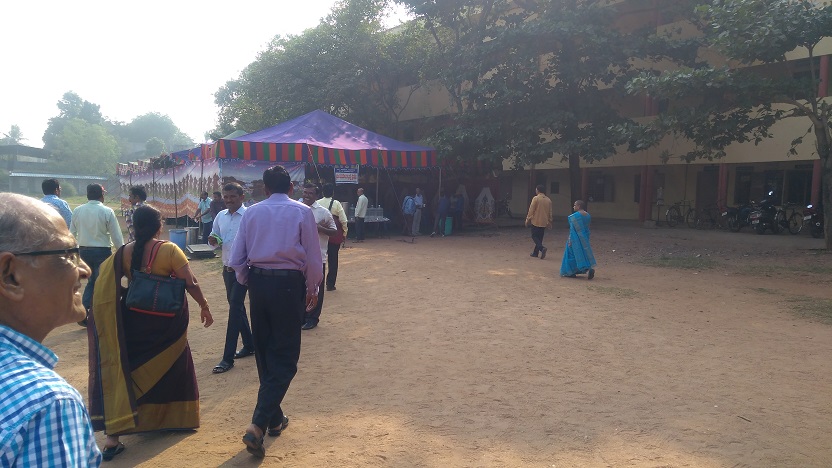




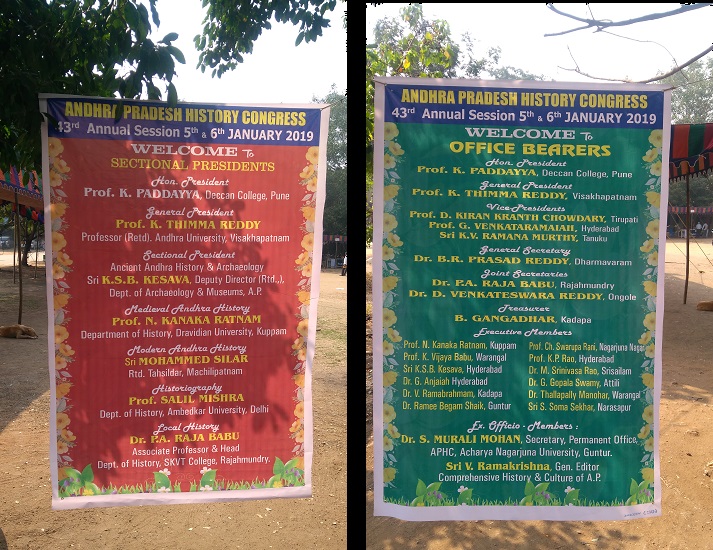
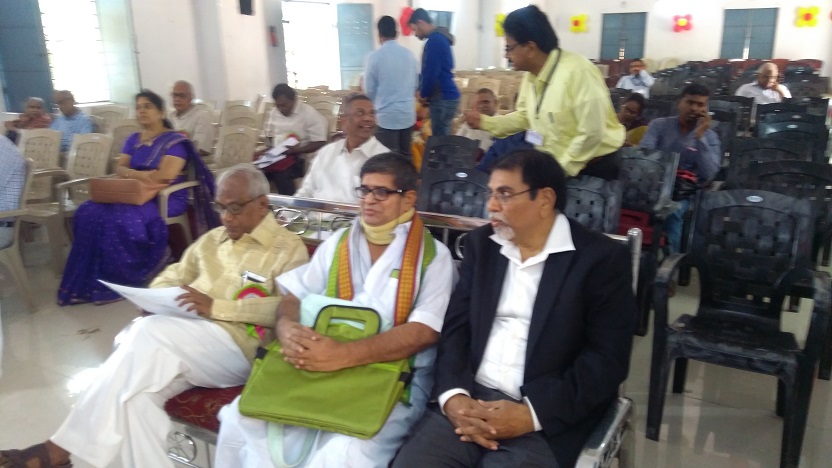
 from right to left and then left to right!
from right to left and then left to right!
